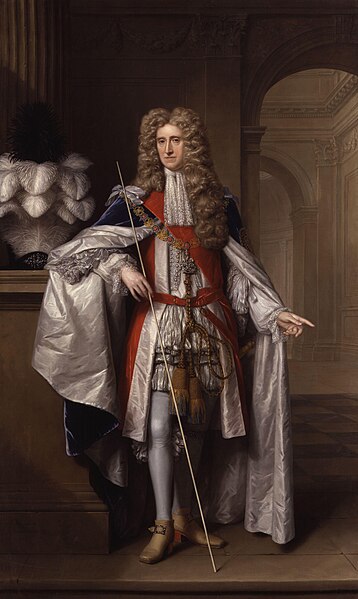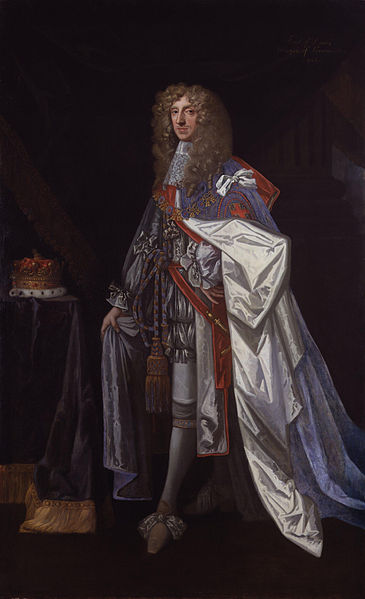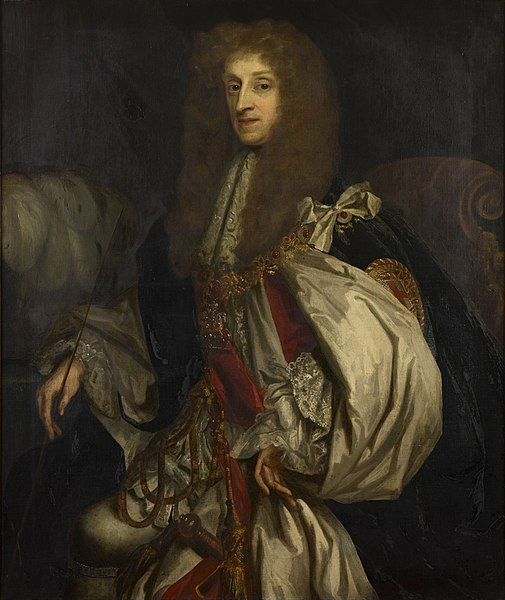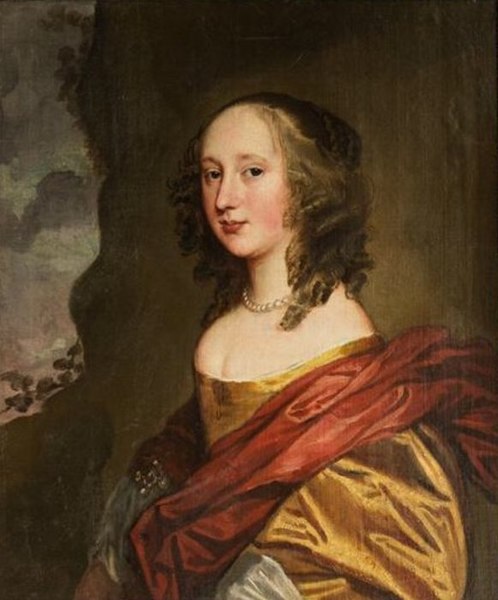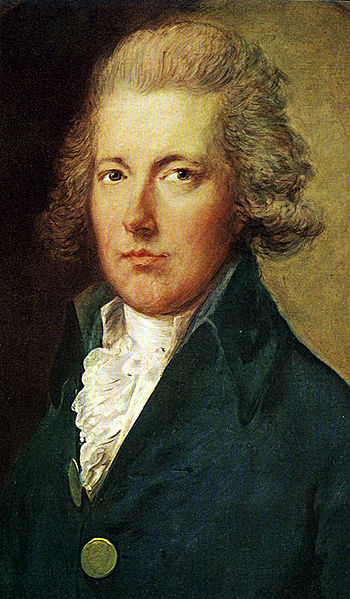Thomas Osborne, 1st Duke of Leeds
Thomas Osborne, 1st Duke of Leeds, was an English Tory politician and peer. During the reign of Charles II of England, he was the leading figure in the English government for roughly five years in the mid-1670s. Osborne fell out of favour due to corruption and other scandals. He was impeached and eventually imprisoned in the Tower of London for five years until James II of England acceded in 1685. In 1688, he was one of the Immortal Seven who invited William of Orange to depose James II during the Glorious Revolution. Osborne was again the leading figure in England's government for a few years in the early 1690s before dying in 1712.
Portrait by Johann Kerseboom, c. 1704
Thomas Osborne, Lord Danby, painted in Charles II's reign by Peter Lely (1618–1680)
Thomas Osborne, painted later in life as Duke of Leeds
Bridget Osborne, Duchess of Leeds
Tories (British political party)
The Tories were a loosely organised political faction and later a political party, in the Parliaments of England, Scotland, Ireland, Great Britain and the United Kingdom. They first emerged during the 1679 Exclusion Crisis, when they opposed Whig efforts to exclude James, Duke of York from the succession on the grounds of his Catholicism. Despite their fervent opposition to state-sponsored Catholicism, Tories opposed his exclusion because of their belief that inheritance based on birth was the foundation of a stable society.
James, Duke of York painted in a Romanesque costume
James Stuart, the Pretender during the Jacobite rising of 1715, by gaining some Tory support it was thus used to discredit them by the Whigs
William Pitt the Younger

